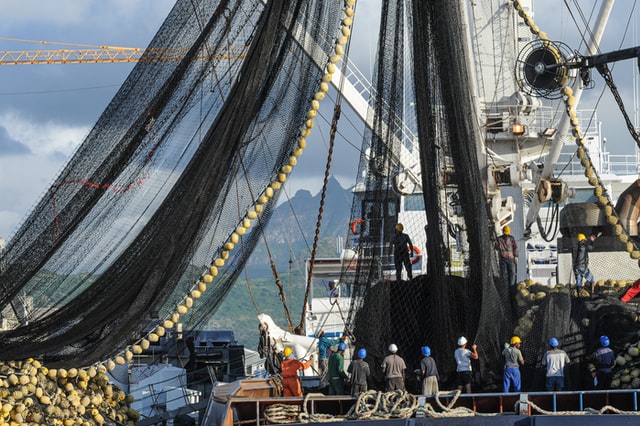- About
- Topics
- Picks
- Audio
- Story
- In-Depth
- Opinion
- News
- Donate
- Signup for our newsletterOur Editors' Best Picks.Send
Read, Debate: Engage.
| July 25, 2024 | |
|---|---|
| topic: | Conservation |
| tags: | #overfishing, #endangered species, #Blue whale, #whaling |
| located: | USA, Mexico, Greenland, Canada, Argentina, Australia |
| by: | Gerardo Bandera |
The Blue Whale (Balaenoptera musculus) has been listed as an endangered species to protect the remaining population. Conservation efforts are focussing on cracking down on illegal whaling ships, cleaning up oceans from fishing nets and other dangerous debris, as well as nurturing baby whales to make sure they survive.
However, this may not be enough to save this incredible animal from extinction if stricter measures are not imposed and obeyed.
Blue whales have been moved from the top of their food chains to the top of the endangered species list. Human activity is the main cause of the drastic decline in blue whale populations, mostly due to fishing gear, vessel strikes and whaling.
As one of the many victims of irresponsible fishing, whales often come into contact with in-use or abandoned fishing gear. In some regions, up to 60 per cent of whales have been entangled in fishing gear at least once in their lifetime.
Whales may carry off the fishing gear, which then inhibits their feeding and mating activities or prevents their mobility due to the weight of the nets, which tires out the whales and may kill them due to fatigue.
Despite their size, blue whales sometimes go unseen and are struck by large vehicles, such as cruise ships, container ships or even smaller rafts. Sometimes, larger ships may spot whales but are unable to detour from their course in time to avoid a strike. These collisions can be lethal to blue whales and are especially common along shipping lanes and routes.
Between 1904 and 1967, an estimated 350,000 blue whales were killed due to whaling. These large cetaceans were seen as highly valuable since up to 50 per cent of their body weight was composed of highly prized blubber for whale oil.
Before whaling became regulated, whale oil was a major ingredient in soap, oil-burning lamps and margarine.
Blue whales emit noises that, under the right conditions, can be heard over 1,000 miles (1600 km) away. They use these strong vocalisations as sonars to navigate through the ocean floors, find their communities, fend off aggressors and communicate with other whales.
However, noise pollution from human activities, like ship sonars, fracking, or most recently deep sea mining, has been found to interrupt whale communications. Due to this, whale communities may lose their migration routes and baby whales can become separated from their mothers, reducing their chances of survival.
Only an estimated 10,000 to 25,000 blue whales are left in the world due to human activity.
Blue whales play critical roles in maintaining population equilibriums in their environments. Without a population of whales, the krill on which they feed would multiply exponentially; in turn, krill will deplete the populations of phytoplankton and algae on which they feed, causing an imbalance in the marine ecosystem.
Whales also play a role in carbon capture and help regulate the planet’s climate. For one, their iron-rich faeces are critical growing grounds for phytoplankton, which capture almost 40 per cent of global annual CO2 emissions.
Additionally, the bodies of whales can capture up to 33 tonnes of carbon, which is then stored at the bottom of the seabed when the whales die. Reestablishing blue whale populations can, therefore, offer major opportunities for climate change mitigation and carbon capture in natural ways.
Some organisations have proposed that fostering whales could be offered as a form of carbon offsetting plan for large GHG emitters.
Since blue whales continually migrate between feeding areas and breeding areas, blue whales are found across all oceans except the Arctic. Blue whales are often seen off the Gulf of California, the North Atlantic Ocean, the North Pacific and even off the coast of Mexico.
On the other side of the world, they have been spotted or heard off the Bay of Bengal and the Arabian Sea.
The blue whale is the largest known animal to have ever existed on Earth: while males can measure up to 69 feet (21 metres) in length, female blue whales can be as large as 79 feet (24 metres). The largest blue whale ever recorded was 110 feet (33.5 metres) long - as tall as an eleven-story building.
The blue whale’s heart is also impressively large, weighing 400 pounds (180 kg) and is the size of a small car. This massive organ sometimes beats only two to twelve times per minute when a whale dives deep into the ocean.
Read our in-depth coverage on Latin America's Fishing Industry
The majority of the blue whale’s diet consists of krill (tiny crustaceans similar to shrimp), although they sometimes eat other crustaceans and small aquatic creatures that wander into their mouths. On average, blue whales eat four tonnes of krill per day, although some sources say they can eat up to 10 tonnes.
Fortunately, many organisations are joining forces to protect this endangered species. Commercial whaling is now banned under the International Whaling Commission, which states that the population is recovering at a rate of 7 per cent per year.
Organisations like NOAA work with marine authorities and shipping vessel companies to prevent vessel strikes by implementing vessel speed restrictions, recommending diversion routes and using drones to monitor whale migration routes.
Some organisations, like the Ocean Conservancy, are focusing on removing fishing gear and nets, also called ghost gear, from the oceans to prevent their deadly impact on whales and other marine ecosystems.
Supporting these crucial causes are critical to helping these incredible animals rebound from their human-caused endangerment.
Image by Venti Views
By copying the embed code below, you agree to adhere to our republishing guidelines.

